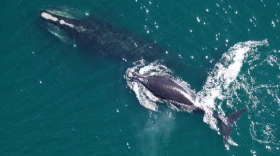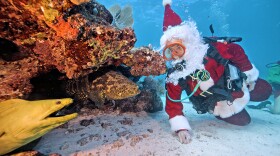A coalition of Florida’s environmental groups has petitioned the U.S. Environmental Protection Agency to use its authority under the Clean Water Act to step in and set water-quality standards to protect Florida’s residents, visitors, and wildlife from the health dangers posed by harmful algae blooms
The action is the latest maneuver by environmentalists who say they have been trying for years to get state environmental officials to do something substantive about the growing problems of toxic red tide along the coasts and blue-green algae, also known as cyanobacteria, throughout inland waterways and lakes.
The standards sought in the petition are designed to help the state more effectively monitor water quality and identify and clean up waters impaired by cyanotoxins.
“It is unacceptable,” said James Evans, chief executive at the Sanibel-Captiva Conservation Foundation. “The recurring cyanobacteria blooms in Lake Okeechobee and the Caloosahatchee and St. Lucie estuaries pose a significant risk to human health, wildlife,, and our local economies, and underscore the need for enforceable standards."
Blue-green algae are a type of bacteria that can photosynthesize like plants. When these algae grow excessively, often due to nutrient pollution like fertilizers running from lawns and farms into streams, rivers, and lakes, they form blooms that can produce toxins that can cause abdominal pain, nausea, vomiting, and in severe cases, liver failure.
Red tide blooms, when mixed about by winds and crashing waves, can fling toxins airborne that when breathed in disrupt the way nerve cells work, which can cripple the nervous system in humans with respiratory problems and susceptible marine creatures.
Recognizing the need to set water quality and health standards for harmful algae blooms, the EPA recommended “final” criteria in 2019 for two of the most common cyanotoxins plaguing Florida’s waters.
Although states are not required to adopt the EPA recommendations, they are required to explain their reasoning for not adopting the criteria as part of their every-third-year reviews of water-quality standards.
But Florida is years overdue in completing its three-year water-quality review and has not given the EPA a reason for failing to set criteria for the algae.
“The state’s refusal to set limits on these dangerous toxins suggests it’s more concerned about avoiding responsibility for algae blooms than providing necessary protections for Floridians,” said Jason Totoiu, a senior attorney at the Center for Biological Diversity. “I know how important it is to our families, visitors, and local economies for the EPA to put standards in place that can guide our efforts to clean up this toxic mess.”
Before involving the EPA, the Center for Biological Diversity and some of the same agencies petitioned State of Florida regulators five years ago to establish criteria for the cyanotoxins that are linked to liver disease and increased neurodegenerative risks in people.
Since Florida did not take enough action, the groups are bringing the weight of the federal environmental agency into the scrum in an attempt to combat algae blooms, which have killed dogs, ruined beach vacations, and slammed tourism economies on a regional scale like in 2019 when algae blooms lasted longer than a year.

The four Florida nonprofits that have joined the Center for Biological Diversity in asking the EPA to step in to limit human exposure to the toxins are Calusa Waterkeeper, Friends of the Everglades, and the Florida Wildlife Federation
During a stretch of eight months after Hurricane Ian in late 2022 and early 2023 there were more than a dozen red tide blooms off Southwest Florida. Since the beginning of this year there have been seven health advisors due to positive sampling for blue-green algae along the Caloosahatchee River.
Florida Governor Ron DeSantis has established separate task forces to study blue-green algae and red tide, but critics say DeSantis then ignores the two teams’ recommendations.
DeSantis’ office did not return requests for the governor to comment.
Sign up for WGCU's monthly environmental newsletter, the Green Flash, today.
WGCU is your trusted source for news and information in Southwest Florida. We are a nonprofit public service, and your support is more critical than ever. Keep public media strong and donate now. Thank you.








